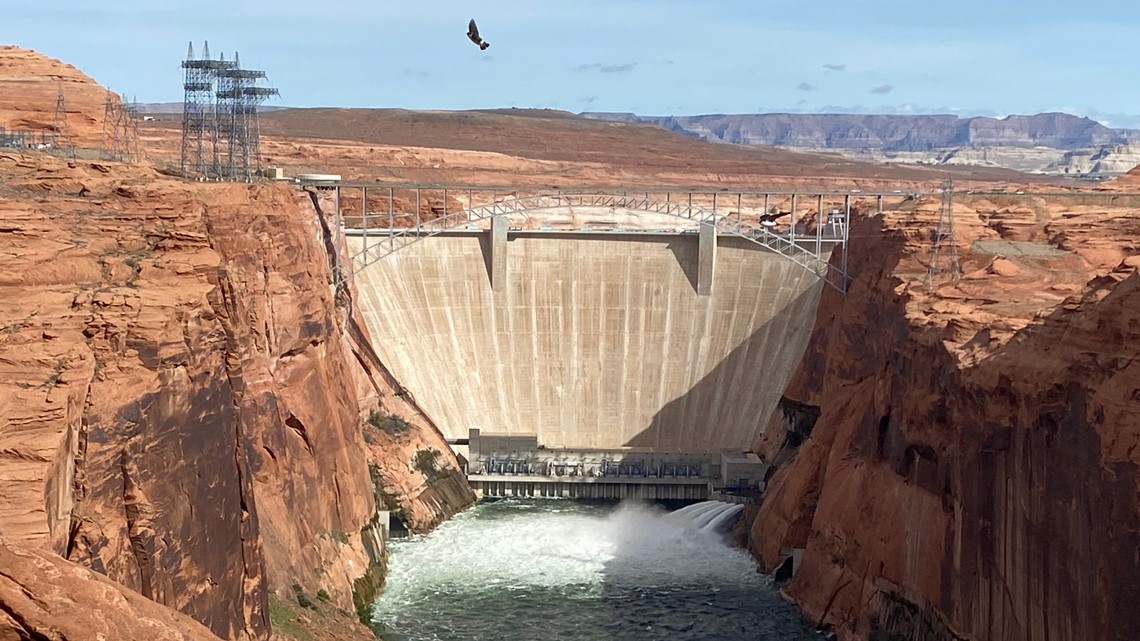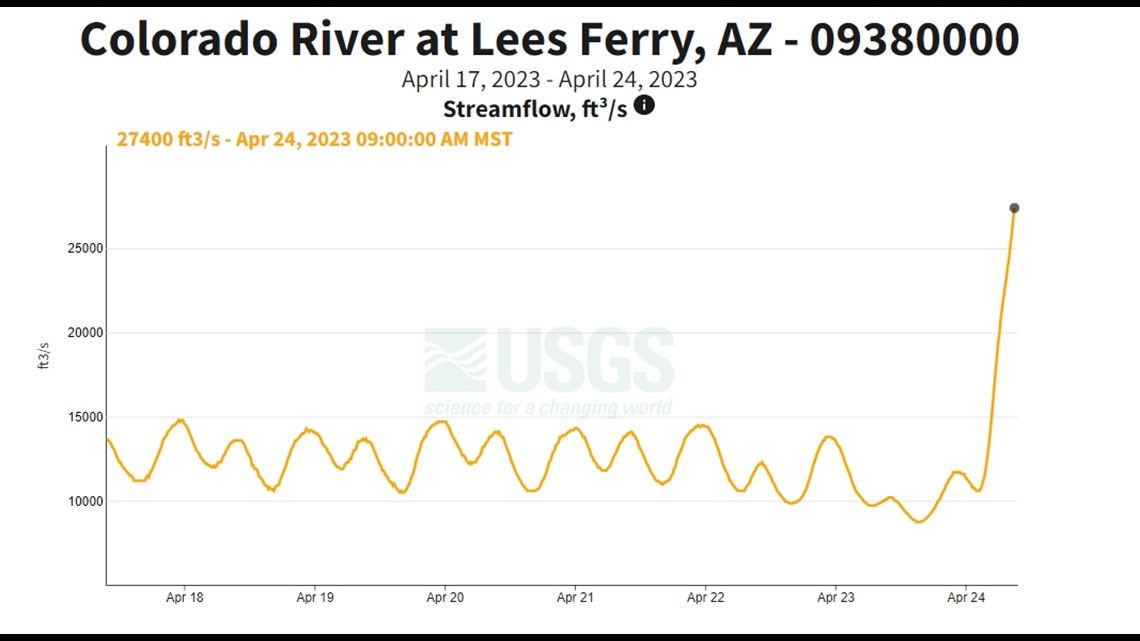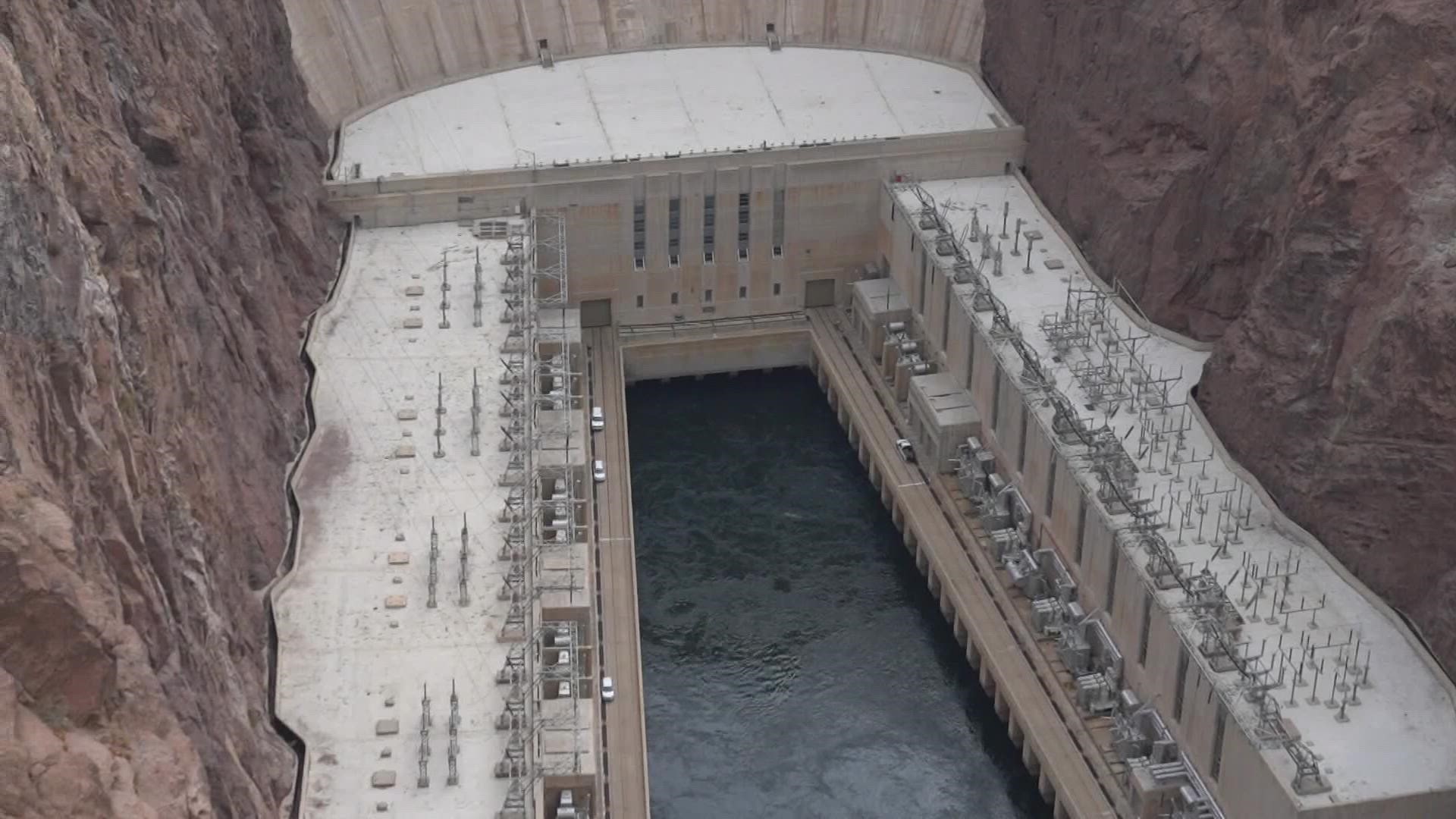PAGE, Ariz. — Editor's note: The above video aired during a previous broadcast.
From Monday to Wednesday, Glen Canyon Dam is set to release so much water that it will restore beaches and remake rapids throughout the Grand Canyon, experts say.
It's called a high-flow experiment (HFE) and it's the first one to happen in the springtime in 15 years.
Officials expect as much as 39,500 cubic feet of water per second to flow out of the dam. For context, the average bathtub only holds 4-8 cubic feet of water.
That's a lot of bathtubs.
That's also approximately 295,480 gallons of water coming out of the dam every second.


Data from the United States Geological Survey shows just how stark of a difference this makes.


Because of the HFE, the amount of water flowing through the Colorado River at Lees Ferry has nearly tripled as of Monday morning.
As of April 2023, the amount of water flowing into Lake Powell is 177% of the usual average intake, according to a release from the United States Bureau of Reclamation. Experts say it could raise the lake level by 50 feet.
It's the result of a record-setting wet winter that has given our water system a brief respite from the Southwest's ongoing megadrought. Because of the extra intake, the bureau is able to hold an HFE that more closely aligns with the natural flood periods of the river, scientists say.
"In many portions of the basin, we're looking at 150% to 100% to 75% over normal snowpack. This is a snow-melt river for them. And so as that snow melts and comes down, Lake Powell will rise perhaps as much as 50 feet this year," explained Wild Arizona's Grand Canyon Wildlands Council Ecologist Larry Stevens.
"The flood will be about three days long, which is probably enough to move a fair amount of sediment up on the sandbars and not transport too much of it out of the system," Stevens said.
He sees this artificial flood as a crucial part of restoring and rejuvenating the sandbars along the Colorado River, and getting ready for the increased water flow that we'll continue to see for the upcoming months.
Kelly Burke, the Council's director, explained that the increased flow throughout the year is "quite erosive." Because of that, she says the environment needs this HFE to pack the beaches with the sand and sediment that it will carry.
Burke sees this HFE is the exciting result of several stakeholders in the area coming together to make the best decisions for the Colorado River.
"The Bureau of Reclamation took some really wonderful leadership in seeing this through -- recognizing all the things that were at stake," she said. "And what this has done is demonstrate that we can address those issues without basically throwing the Grand Canyon under the bus."
She says we're not out of the megadrought yet, but it's a sign of good things to come.
A warning to swimmers
While the ecological benefits are exciting, Stevens warns that the increased flow could put people in the river at risk.
"It becomes a very noisy pushy river," he said. "For people that are maybe not as up on their rowing skills and motoring skills as they could be, these high flows are very punishing."
"It becomes a very different river than it is at low water."
Stevens said that currents are "quite dangerous," and stressed that people should not go swimming in the river near Glen Canyon during the HFE.
The HFE started Monday, April 24 at 9 a.m. and is scheduled to continue until Thursday, April 27 at 9 .m. The dam will be at peak release for roughly 72 hours, during which time recreationists are urged to use caution.
Visitors to the Colorado River between Glen Canyon and Lake Mead are "highly encouraged" to check safety information and flow release patterns on the National Parks Service website at nps.gov.
Water Wars
Water levels are dwindling across the Southwest as the megadrought continues. Here's how Arizona and local communities are being affected.

